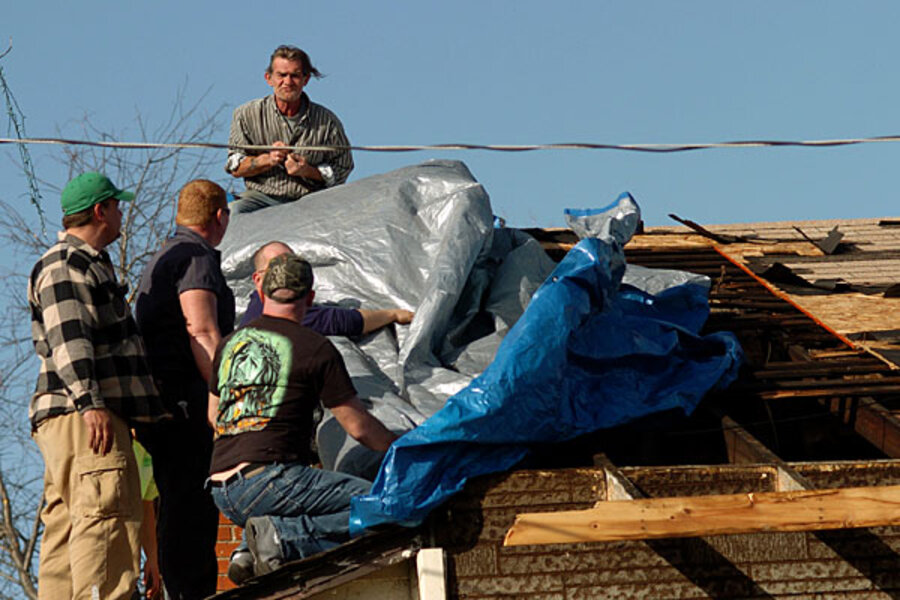Rare, night tornadoes hit Harrisburg, Branson, and other Midwest towns
Loading...
| Harrisburg, Ill.
Jeff Rann had ample warning that terrible weather was approaching before dawn. A frantic call to his wife from his mother-in-law alerted them to reports that a tornado was barreling down, and Rann heard the deafening wail of storm sirens.
Rann was among those who survived the weather's passing assault Wednesday, his home untouched. Yet just two blocks away in the southern Illinois town of Harrisburg, population 9,000, Rann's parents were not as fortunate.
Caught in the relatively uncommon night-time twister, the Ranns were among six people killed Wednesday when blocks of homes in Harrisburg were flattened by overnight storms that raked the nation's midsection, killing at least 12 people in three states.
IN PICTURES: Extreme weather 2012
In Harrisburg, which has a rich coal-mining history, Mayor Eric Gregg called the tornado strike "heartbreaking." The National Weather Service preliminarily listed the tornado as an EF4, the second-highest rating given to twisters based on damage. Scientists said the tornado was 200 yards wide with winds up to 170 mph.
Adding to the danger, it hit as many slept — a timing research meteorologist Harold Brooks called unusual but "not completely uncommon."
Brooks, with the NOAA National Severe Storms Laboratory in Norman, Okla., said perhaps 10 percent of tornadoes happen between midnight and 6 a.m., a time when the danger level rises because the storms are harder to spot and it's harder to get the word out.
"If you're asleep, you're less likely going to hear anything, any warning message on the danger," Brooks said.
Ryan Jewell, a meteorologist with the Storm Prediction Center, said the next system is forecast to take a similar path as Wednesday's storms and has the potential for even more damage.
On Friday, he said, both the Midwest and South will be "right in the bull's eye."
Elsewhere on Wednesday, one person was killed in a Buffalo, Missouri, trailer park while two more fatalities were reported in the Cassville and Puxico areas. A tornado hopscotched through the main thoroughfare of Missouri country music mecca Branson, damaging some of the city's famous theaters just days before the start of the town's crucial tourist season.
Three people were reported killed in eastern Tennessee — two in Cumberland County and another in DeKalb County.
And in Kansas, much of tiny Harveyville was in shambles from what state officials said was an EF2 tornado packing wind speeds of 120 to 130 mph.
At least 16 tornados were reported from Nebraska and Kansas across southern Missouri to Illinois and Kentucky, according to the Storm Prediction Center in Norman, Okla., an arm of the National Weather Service.
___
Jim Salter and AP photographer Mark Schiefelbein in Branson, Missouri, Rochelle Hines in Oklahoma City, Okla., and Janet Cappiello in Louisville contributed to this report.





